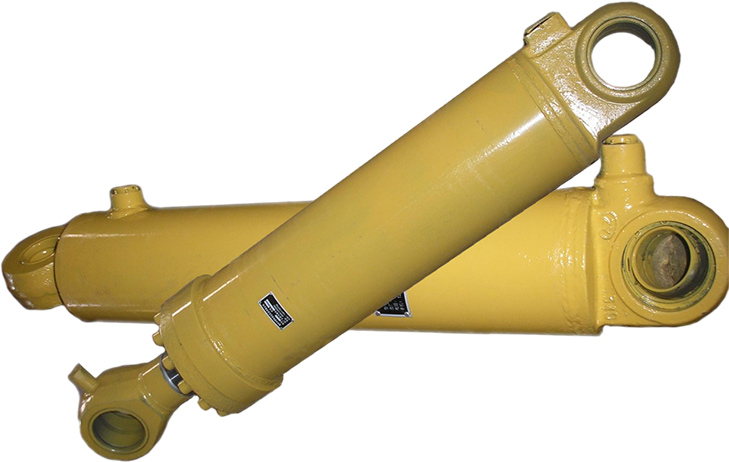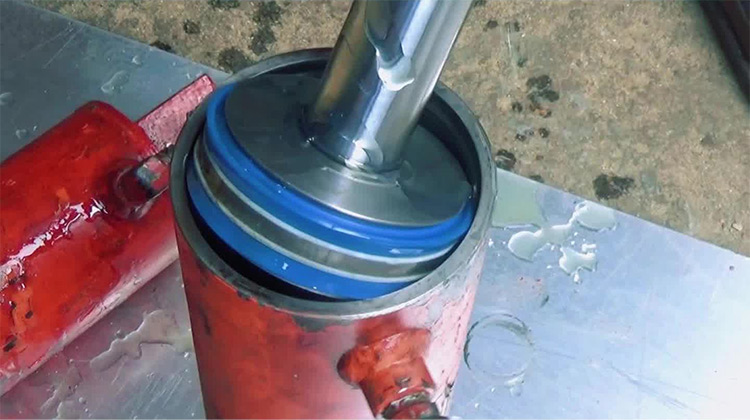- English
- Español
- Português
- русский
- Français
- 日本語
- Deutsch
- tiếng Việt
- Italiano
- Nederlands
- ภาษาไทย
- Polski
- 한국어
- Svenska
- magyar
- Malay
- বাংলা ভাষার
- Dansk
- Suomi
- हिन्दी
- Pilipino
- Türkçe
- Gaeilge
- العربية
- Indonesia
- Norsk
- تمل
- český
- ελληνικά
- український
- Javanese
- فارسی
- தமிழ்
- తెలుగు
- नेपाली
- Burmese
- български
- ລາວ
- Latine
- Қазақша
- Euskal
- Azərbaycan
- Slovenský jazyk
- Македонски
- Lietuvos
- Eesti Keel
- Română
- Slovenski
- मराठी
- Srpski језик
Hydraulic Cylinder Faults and Maintenance Methods
2025-09-30
Introduction
The hydraulic cylinder is an extremely important component of the hydraulic system, playing a key role as the executing element in the entire hydraulic system. Throughout the process, the hydraulic cylinder mainly converts hydraulic energy into mechanical energy. However, hydraulic cylinders often fail during use due to issues such as seal wear, cylinder wear, inner wall scratches, inner wall corrosion, and piston or piston rod scratches. These failures can be roughly attributed to two types: weakness and crawling. Due to the frequent occurrence of equipment shutdown caused by hydraulic cylinder failures, it is necessary to attach great importance to the fault diagnosis and maintenance of hydraulic cylinders. Next, we will provide a detailed introduction to the faults, causes, and maintenance methods of hydraulic cylinders.

Alt. Excavator Double Acting Hydraulic Cylinder
Fault 1:
CrawlingPhenomenon:
When the piston rod of the hydraulic cylinder extends or retracts under the action of oil pressure, uneven speed often occurs, and sometimes accompanied by vibration and abnormal noise, causing vibration of the entire hydraulic system.
Cause Analysis and Solutions
(1) The low-speed crawling caused by the presence of gas in the rod chamber and rodless chamber of a hydraulic cylinder, due to the mixing of air in the hydraulic oil, changes in volume under pressure, and even causes instantaneous gas explosion under high pressure, resulting in unstable speed of the hydraulic cylinder. If it is determined that the crawling is caused by this reason, the purpose of exhaust can be achieved by repeatedly extending and retracting the hydraulic cylinder, or an exhaust device can be installed at the two chamber oil ports of the pipeline or hydraulic cylinder to exhaust during the operation of the hydraulic system. Or the simplest and quickest way is to slightly loosen the pipe joints at the inlet and outlet of the two chambers in the telescopic oil cylinder, allowing the air to be discharged as soon as possible.
(2) The low-speed crawling caused by improper clearance design of hydraulic cylinders, and the sliding fit clearance between the piston and cylinder body, piston rod and guide sleeve inside the hydraulic cylinder that is too large or too small, can cause uneven pressure on the sliding surface, resulting in uneven friction and causing hydraulic cylinder crawling; If it is determined that the crawling is caused by this reason, the sliding fit clearance between the internal piston and cylinder body, piston rod and guide sleeve can only be repaired. The theoretical fit clearance after repair should reach H9/f8 or H8/f8.
(3) The commonly used sealing materials for hydraulic cylinders include polyurethane rubber, nitrile rubber, polytetrafluoroethylene, etc. Due to issues with material hardness, strength, and followability, the difference in friction with the sliding surface causes the cylinder to crawl. When encountering such problems, priority can be given to replacing the combination sealing ring with polytetrafluoroethylene as the seal, such as Glay ring, Steller seal, etc.
Fault 2:
InabilityPhenomenon:
There is no movement during startup, with insufficient thrust, slow speed, inaccurate piston rod stop, and unstable operating speed.
Cause Analysis and Solutions
After investigating the issue of insufficient hydraulic cylinder oil intake caused by other components and pipelines in the hydraulic system, if it is confirmed that the hydraulic system pipelines and other components are normal, it means that there is a leak inside the hydraulic cylinder.
Internal leakage of hydraulic cylinders usually includes the following situations: leakage caused by excessive wear of hydraulic cylinder body seals, piston rod and seal cover seals, and piston seals.
Specific Causes and Solutions For Leakage:
(1) One of the common reasons for seal installation errors is incorrect or missing seals. The sealing gland is not properly installed and cannot be tightened, such as deviation in gland installation, uneven force on fastening screws, and excessively long fastening screws. At this point, each screw should be tightened in diagonal order, and the force should be evenly and uniformly applied when tightening each screw. The length of the screw should also be selected reasonably according to the depth of the screw hole.
(2) The usage conditions of seals may also lead to wear and oil leakage, such as unclean oil, low viscosity, high oil temperature, and high ambient temperature. In response to these situations, we can take measures such as replacing suitable clean oil, identifying the cause of temperature rise, and implementing insulation and oil cooling devices.

alt.Hydraulic Cylinder Oil Seal Assembly
Summary
As a key actuator in hydraulic systems, hydraulic cylinders play an important role in converting hydraulic energy into mechanical energy. However, in practical use, hydraulic cylinders often experience typical faults such as "crawling" and "powerlessness" due to seal wear, improper fit clearance, gas mixing, oil contamination, or excessive temperature rise, seriously affecting the stability and reliability of equipment operation.
Regarding the issue of "crawling", it is necessary to focus on investigating factors such as gas residue, unreasonable fitting gaps, or unsuitable sealing material, and take corresponding measures such as exhaust, repairing gaps, or replacing high-performance seals. For the phenomenon of "powerlessness", on the basis of excluding problems with other components of the system, emphasis should be placed on checking the internal sealing status and installation




